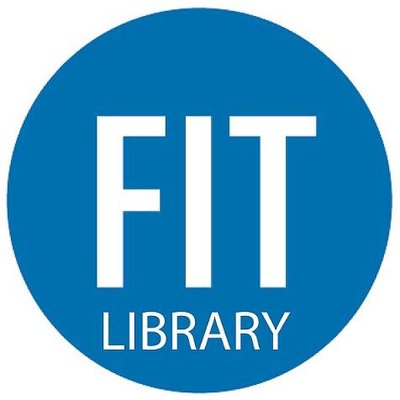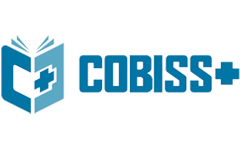Exploring Social Media’s Influence on Sustainable Indigenous Tourism
DOI:
https://doi.org/10.61841/n3n7en24Keywords:
indigenous tourism, social media, community capacity buildingAbstract
The aim of this study is to holistically understand the role of social media in influencing the sustainable ethnic tourism practice. An inductive approach is used to identify the level of the study variables. Past studies relevant towards social media technology and sustainability were analysed and discussed. It is evident that the existing literature heavily supports the need of social media in tourism development. Local communities especially the indigenous people are urged to utilize the virtual platform to sell their tourism products. However, unavailability of community capacity often hinder them to used social media at a desired level. Thus, a critical understanding of social media and sustainable tourism conceptualization is highlighted to provide a holistic perspective.
Downloads
References
1. Agyeiwaah, E., McKercher, B., &Suntikul, W. (2017). Identifying core indicators of sustainable tourism: A path forward?. Tourism Management Perspectives, 24, 26-33.
2. Bowen, J., &Baloglu, S. (2015). Common themes across social media research. Worldwide Hospitality and Tourism Themes, 7(3), 314-319.
3. Buhalis, D., & Law, R. (2008). Progress in information technology and tourism management: 20 years on and 10 years after the Internet—The state of eTourism research. Tourism Management, 29(4), 609-623.
4. Butowski, L. (2017). Tourist sustainability of destination as a measure of its development. Current Issues in Tourism, 1043-1061.
5. Chen, F. W., Guevara Plaza, A., &AlarcónUrbistondo, P. (2017). Automatically extracting tourism-related opinion from Chinese social media. Current Issues in Tourism, 20(10), 1070-1087.
6. Cheng, M., Wong, I. A., Wearing, S., & McDonald, M. (2017). Ecotourism social media initiatives in China. Journal of Sustainable Tourism, 25(3), 416-432.
7. Choi, H. S. C., &Sirakaya, E. (2005). Measuring residents’ attitude toward sustainable tourism: Development of sustainable tourism attitude scale. Journal of Travel Research, 43(4), 380-394.
8. Chung, J. Y., &Buhalis, D. (2008). Information needs in online social networks. Information Technology & Tourism, 10(4), 267-281.
9. Cooper, M., Thai, L. Q., Claster, W., Vafadari, K., & Pardo, P. (2017). Social Media and Knowledge Transfer
in Tourism: Five-Star Hotels in Philadelphia. In Knowledge Transfer to and within Tourism: Academic, Industry and Government Bridges(pp. 239-255). Emerald Publishing Limited.
10. Gretzel, U., Yuan, Y. L., &Fesenmaier, D. R. (2000). Preparing for the new economy: Advertising strategies and change in destination marketing organizations. Journal of travel Research, 39(2), 146-156.
11. Hajli, M. N., & Lin, X. (2014). Developing tourism education through social media. Tourism Planning &
Development, 11(4), 405-414.
12. Hanna, R., Rohm, A., & Crittenden, V. L. (2011). We’re all connected: The power of the social media
ecosystem. Business horizons, 54(3), 265-273.
13. Hays, S., Page, S. J., &Buhalis, D. (2013). Social media as a destination marketing tool: its use by national
tourism organisations. Current issues in Tourism, 16(3), 211-239.
14. Hjalager, A. M. (2010). A review of innovation research in tourism. Tourism management, 31(1), 1-12.
15. Howison, S., Finger, G., & Hauschka, C. (2015). Insights into the Web presence, online marketing, and the
use of social media by tourism operators in Dunedin, New Zealand. Anatolia, 26(2), 269-283.
16. Hu, F., Li, Z., Yang, C., & Jiang, Y. (2018). A graph-based approach to detecting tourist movement patterns
using social media data. Cartography and Geographic Information Science, 1-15.
17. Hudson, S., &Thal, K. (2013). The impact of social media on the consumer decision process: Implications for
tourism marketing. Journal of Travel & Tourism Marketing, 30(1-2), 156-160.
18. Hussain, T., Chen, S., &Nurunnabi, M. (2019). The role of social media for sustainable development in
mountain region tourism in Pakistan. International Journal of Sustainable Development & World
Ecology, 26(3), 226-231.
19. Hvass, K. A., &Munar, A. M. (2012). The takeoff of social media in tourism. Journal of vacation
marketing, 18(2), 93-103.
20. Jacobsen, J. K. S., &Munar, A. M. (2012). Tourist information search and destination choice in a digital
age. Tourism management perspectives, 1, 39-47.
21. Lai, P. H., Morrison-Saunders, A., &Grimstad, S. (2017). Operating small tourism firms in rural destinations:
A social representations approach to examining how small tourism firms cope with non-tourism induced
changes. Tourism Management, 58, 164-174.
22. Law, R., Leung, R., &Buhalis, D. (2009). Information technology applications in hospitality and tourism: a
review of publications from 2005 to 2007. Journal of travel & tourism marketing, 26(5-6), 599-623.
23. Lu, Y., Chen, Z., & Law, R. (2018). Mapping the progress of social media research in hospitality and tourism
management from 2004 to 2014. Journal of Travel & Tourism Marketing, 35(2), 102-118.
24. Luo, Q., & Zhong, D. (2015). Using social network analysis to explain communication characteristics of
travel-related electronic word-of-mouth on social networking sites. Tourism Management, 46, 274-282.
25. Mkono, M. (2016). Sustainability and Indigenous tourism insights from social media: worldview differences, cultural friction and negotiation. Journal of Sustainable Tourism, 24(8-9), 1315-1330.
26. Moro, S., & Rita, P. (2018). Brand strategies in social media in hospitality and tourism. International Journal of Contemporary Hospitality Management, 30(1), 343-364.
27. Narangajavana, Y., Fiol, L. J. C., Tena, M. Á. M., Artola, R. M. R., & García, J. S. (2017). The influence of social media in creating expectations. An empirical study for a tourist destination. Annals of Tourism Research, 65, 60-70.
28. Pabel, A., &Prideaux, B. (2016). Social media use in pre-trip planning by tourists visiting a small regional leisure destination. Journal of Vacation Marketing, 22(4), 335-348., B. (2016). Social media use in pre-trip planning by tourists visiting a small regional leisure destination. Journal of Vacation Marketing, 22(4), 335-348.
29. Qualman, E. (2010). Socialnomics: How social media transforms the way we live and do business. John Wiley & Sons.
30. Roque, V., &Raposo, R. (2016). Social media as a communication and marketing tool in tourism: an analysis of online activities from international key player DMO. Anatolia, 27(1), 58-70.
31. Samah, A. A., Ahmadian, M., Gill, S. S., Hendijani, R. B., &Babolian, R. (2012). Factors affecting educational tourism development among local communities in the Klang Valley, Malaysia. Life Science Journal, 9(4), 3298-3303.
32. Samah, A. A., Ahmadian, M., Gill, S. S., &Hendijani, R. B. (2013). Residents' attitude towards educational tourism in Malaysia. Asian social science, 9(13), 14.
33. Safko, L., & Brake, D. K. (2009). The social media bible. Hoboken. NJ: John Wiley & Sons. Sakamoto.
34. Talib, A. T., Gill, S. S., Kawangit, R. M., Kunasekaran, P., & Serdang, U. P. M. (2013). Religious Tolerance: The Key between One ASEAN One Community. Life Science Journal, 10(4), 1382-1385.
35. Vu, H. Q., Li, G., Law, R., & Zhang, Y. (2018). Tourist activity analysis by leveraging mobile social media data. Journal of travel research, 57(7), 883-898.
36. Xiang, Z., &Gretzel, U. (2010). Role of social media in online travel information search. Tourism management, 31(2), 179-188.
37. Zeng, B., & Gerritsen, R. (2014). What do we know about social media in tourism? A review. Tourism Management Perspectives, 10, 27-36.
Downloads
Published
Issue
Section
License
Copyright (c) 2020 AUTHOR

This work is licensed under a Creative Commons Attribution 4.0 International License.
You are free to:
- Share — copy and redistribute the material in any medium or format for any purpose, even commercially.
- Adapt — remix, transform, and build upon the material for any purpose, even commercially.
- The licensor cannot revoke these freedoms as long as you follow the license terms.
Under the following terms:
- Attribution — You must give appropriate credit , provide a link to the license, and indicate if changes were made . You may do so in any reasonable manner, but not in any way that suggests the licensor endorses you or your use.
- No additional restrictions — You may not apply legal terms or technological measures that legally restrict others from doing anything the license permits.
Notices:
You do not have to comply with the license for elements of the material in the public domain or where your use is permitted by an applicable exception or limitation .
No warranties are given. The license may not give you all of the permissions necessary for your intended use. For example, other rights such as publicity, privacy, or moral rights may limit how you use the material.
















